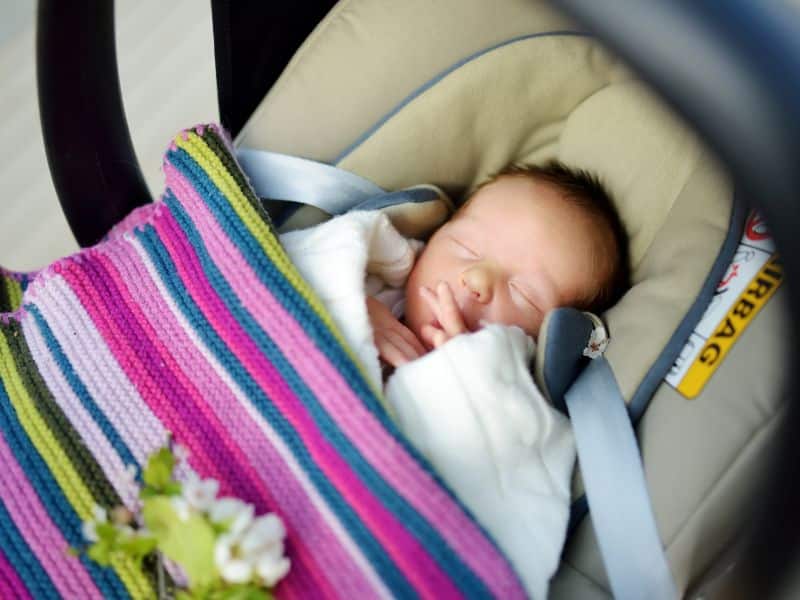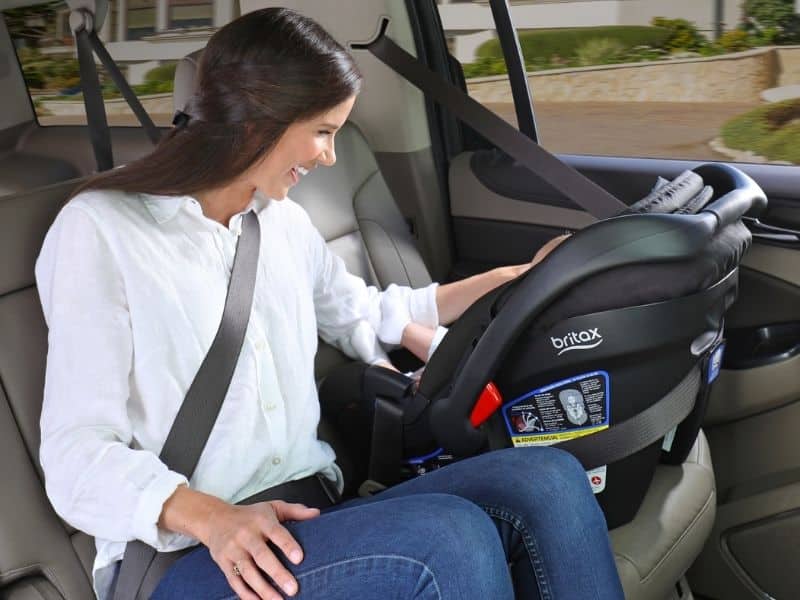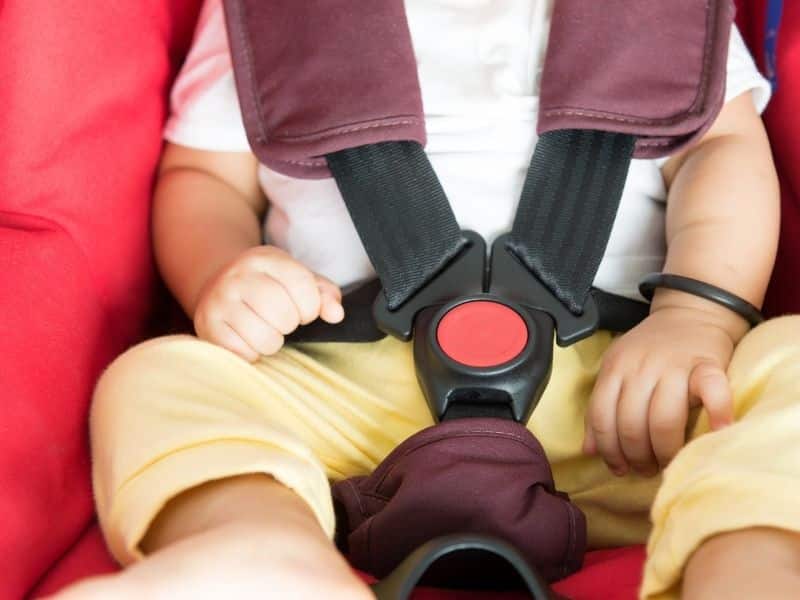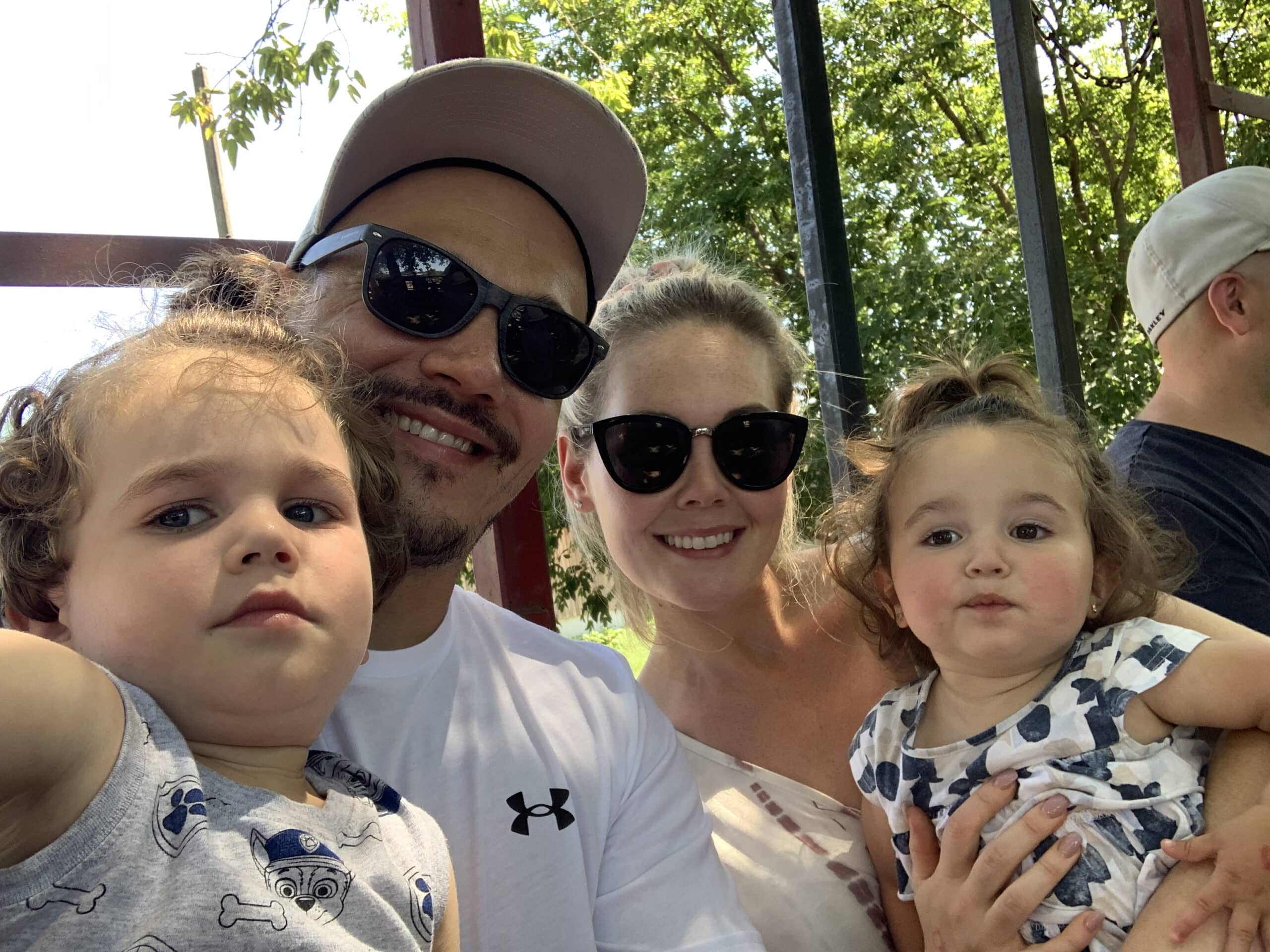Imagine the following scenario:
You’re in a hurry to beat the traffic because your newborn isn’t the biggest fan of car rides or simply the car seat. You’re placing the car seat in its proper position, as you should, securing the baby, and taking off.

While there’s absolutely nothing wrong with what you’re doing, have you ever stopped and asked yourself – why do baby car seats have to face backwards?
We’ve made sure to set all unconfirmed car seat stories and shenanigans aside and pack this post only with genuine information, such as increased safety, better impact absorption, and enhanced head, neck, and spine support.
So, if you ever wondered why do baby car seats face backwards, I’ve got all the answers.
Why do baby seats face backwards?
Baby seats face forward because it’s safer.
That would be the really short answer. But an educated parent will always go beyond the basics.
Although modern-day vehicles are becoming safer, they’re also becoming faster.
We’re more-or-less used to these sudden speed changes. However, that’s not the case for the little ones riding in the back.
Just like the proper car seat strap placement or the design of a car seat, the position of a car seat affects the overall level of safety too.
Instantly after a crash or a sudden stop, strong forces impact our bodies. Head, neck, and spine injuries are some of the most common injuries and consequences of suffering a heavy blow.
Rear-facing car seats absorb most of these forces.
They also provide the much-needed head, neck, and spine support for the newborns inside them. That way, even if a crash occurs, your precious one won’t experience dangerous injuries.
As you probably know, babies have a hard time holding their heads, so a forward-facing position in a car crash would seriously harm them. That’s exactly why does a baby car seat face backwards.
Related: Do car seats float? | Why to do if your baby hates car seats
Other FAQs about the orientation of baby car seats
Do all baby car seats face backwards?
Not all baby car seats face backwards, but all infant seats do.
Let’s unpack that.
If the rear-facing position is the safest, why would anyone switch to the forward-facing one?
All infant car seats must be placed in the rear-facing position because this is the safest spot for babies. There are laws and NHTSA guidelines in place when it comes to the correct positioning of car seats.

As your kid develops, it’ll outgrow the infant car seat and move to a bigger convertible. Rules for infant and convertible car seats aren’t the same, as convertibles give parents the freedom to choose how they’ll position the car seat of their kids.
Still, parents are strongly encouraged to keep their kids in rear-facing car seats as long as possible, especially if they are under two years of age.
For further reading: Are swivel car seats legal in US?
When to switch from a rear-facing to a forward-facing position?
Switch from a rear-facing to a forward-facing position when your child reaches the weight and height limit. Nine times out of ten this won’t be before the age of two.
Still, this isn’t a simple question as there are no universal rules and guidelines. Instead, each car seat will come with its recommendations, and we suggest you stick to them.
Generally speaking, manufacturers create seats that allow kids to ride in the rear-facing position until they reach 40-50 pounds.
Although there aren’t universal laws, one thing is sure – parents shouldn’t rush transitioning to a forward-facing position because their children have all the protection they need in a rear-facing car seat.
Related reads: How long can newborn be in a car seat? | When to forward face a car seat
When is the right time for a booster seat?
It’s time to transition to a booster seat once the three conditions below are met:
- They should be at least 4 years old;
- They should exceed the height or weight limit on their previous car seat;
- They should be mature enough to sit in their booster seat properly.
Once your kid exceeds the booster limits, they’re all grown up!
They’re old enough to ride in a car without using any additional tools to ensure the correct seat belt placement.
For further reading: What to do with old car seat? | all about Car seats age
Infant car seat or convertible – which one is better?
On one hand, infant car seats are usually part of the 2-in-1 travel systemthat comes with a stroller and are lightweight, compact, and easy to use. Since they can be only placed in a rear-facing position, they’re often considered safer for smaller babies.
However, many babies outgrow their infant car seats within a year and you’ll quickly need to get a new one.
On the other hand, convertible car seats can last years and years because they can convert. Rear-facing and front-facing positions are both possible and parents need to decide when their kid is old enough to ride in a front-facing position.

They’re cost-effective too, but small car owners might find their bulky design too difficult to work with. Convertibles need a lot of free space to be set up.
Although infant car seats vs convertible car seats is a popular topic, both designs are extremely safe and do an outstanding job of protecting the little ones, so it all comes down to personal preference.
Final thoughts
There’s a pretty good answer if you’ve been wondering why do infant car seats face backwards. As people become busier and cars more powerful, car safety is becoming a priority, especially when there are children involved.
Knowing the background of the rear-facing position can help you better understand the purpose of all car seats, not just infant ones, and how to properly transition to them.

Steph is a passionate mom who co-founded Wumblers to share her parenting journey with others. She graduated from Concordia University with a masters degree in Education Technology and worked as an advisor for many years. Steph loves being a mom and wants to have more kids.
Learn more about Steph and Wumblers here.